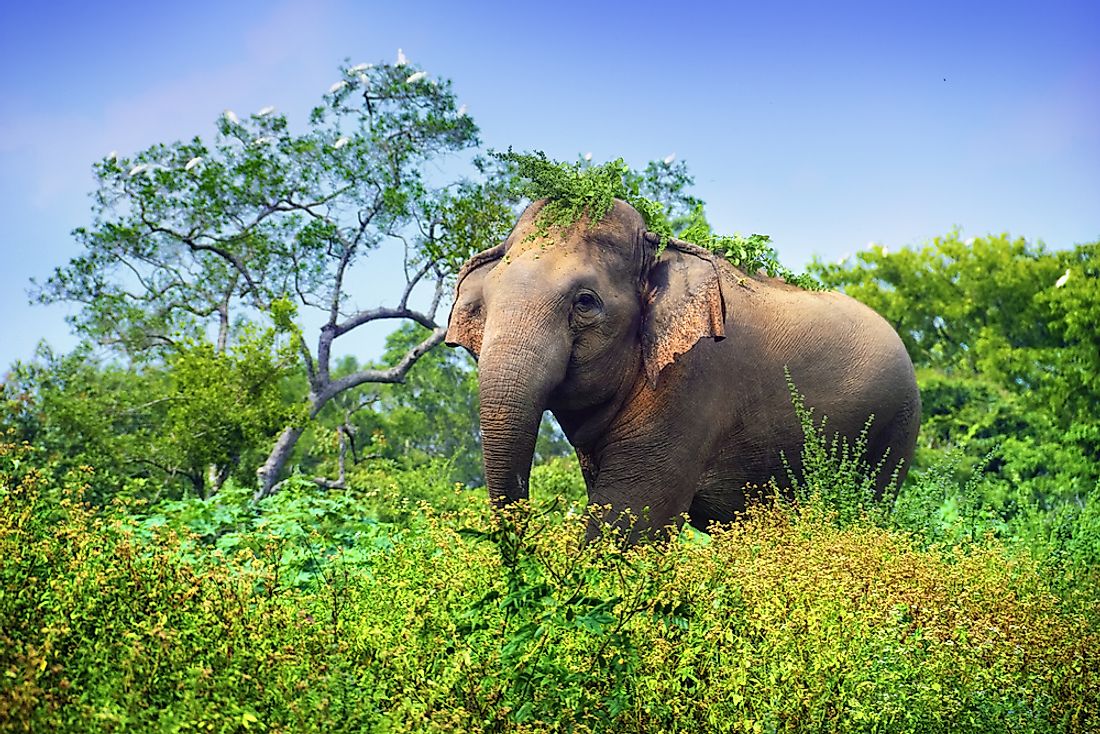Endangered Animals of Bangladesh

Wildlife in Bangladesh is the major attraction for the tourism sector in the country. This has led to many initiatives by the government to protect the populations from further declining. The banteng, hispid hare, and Asian elephant are mainly threatened by poaching and hunting. According to the IUCN Red List, the following animals have been listed as endangered species. This means that if their populations are not monitored and guarded, they may soon become extinct.
Endangered Animals in Bangladesh
Banteng
Bantengs are usually black or chocolate brown. They have white spots on their legs and above their eyes. Male bantengs have a small hump which is located above their shoulders. Wild bantengs can live up to 20 years and they are herbivorous. Females have a gestation period of 585 days and are mostly observed to breed in the months of May and June. Bantengs were the second endangered species to be cloned with the clone living for seven years. The population of Bantengs is often threatened by loss of their habitat to agriculture. They are also hunted down by poachers for their trophy antlers and meat.
Hispid Hare
The hispid hare is a rare animal since it is very secretive and shy. It is also called an Assam rabbit. It weighs approximately 2.5kg and is about 10-15 inches tall. The hispid hare is characterized by a long brown tail and large teeth. They are herbivorous and thus feed on tree bark, shoots, crops and grass roots. As a result of the hispid hare being rare and having a short lifespan, research on their behavior has not been concluded. The primary threat to the hispid hare’s population is the habitat loss as a result of human development activities. These activities include agriculture, logging, and flood control.
Asian Elephant
The trunk of the Asian elephant is believed to contain up to 60,000 muscles. It is used by the elephant for dusting, breathing, feeding, washing, and grasping among other functions. It has smooth skin, is gray in color, and has an average weight of 2.7t for the females and 4t for males. Asian elephants are mainly found in Chittagong Hills, Bangladesh. This is an area that is less accessible to humans. As a result, the human-elephant conflicts are few in this area. The major threat to the existence of the Asian elephant is loss of habitat due to the increasing human population. Furthermore, the elephants also face poaching threats as they are hunted for ivory, food, and leather.
Conserving Endangered Species
Most of the endangered species in Bangladesh are placed in protected areas due to their listing in the CITES Appendix I. There also exists a national legislation known as the Wildlife Act 2012 which protects the hispid hares, bentangs, and Asian elephants from poaching and human encroachment of their habitat. Apart from these legislations, the wildlife authorities in Bangladesh need to engage in management of human–elephant conflicts. This can be done by enlightening the locals about the importance of wildlife to the economy of the country.
Endangered Animals of Bangladesh
| Rank | Scientific Name | Common Name |
|---|---|---|
| 1 | Axis porcinus | Hog deer |
| 2 | Balaenoptera musculus | Blue whale |
| 3 | Bos javanicus | Banteng |
| 4 | Bubalus arnee | Wild water buffalo |
| 5 | Caprolagus hispidus | Hispid hare |
| 6 | Cuon alpinus | Dhole |
| 7 | Elephas maximus | Asian elephant |
| 8 | Hoolock hoolock | Western hoolock gibbon |
| 9 | Manis crassicaudata | Indian pangolin |
| 10 | Panthera tigris | Tiger |
| 11 | Platanista gangetica | Ganges river dolphin |
| 12 | Trachypithecus phayrei | Phayre's Leaf-monkey |











